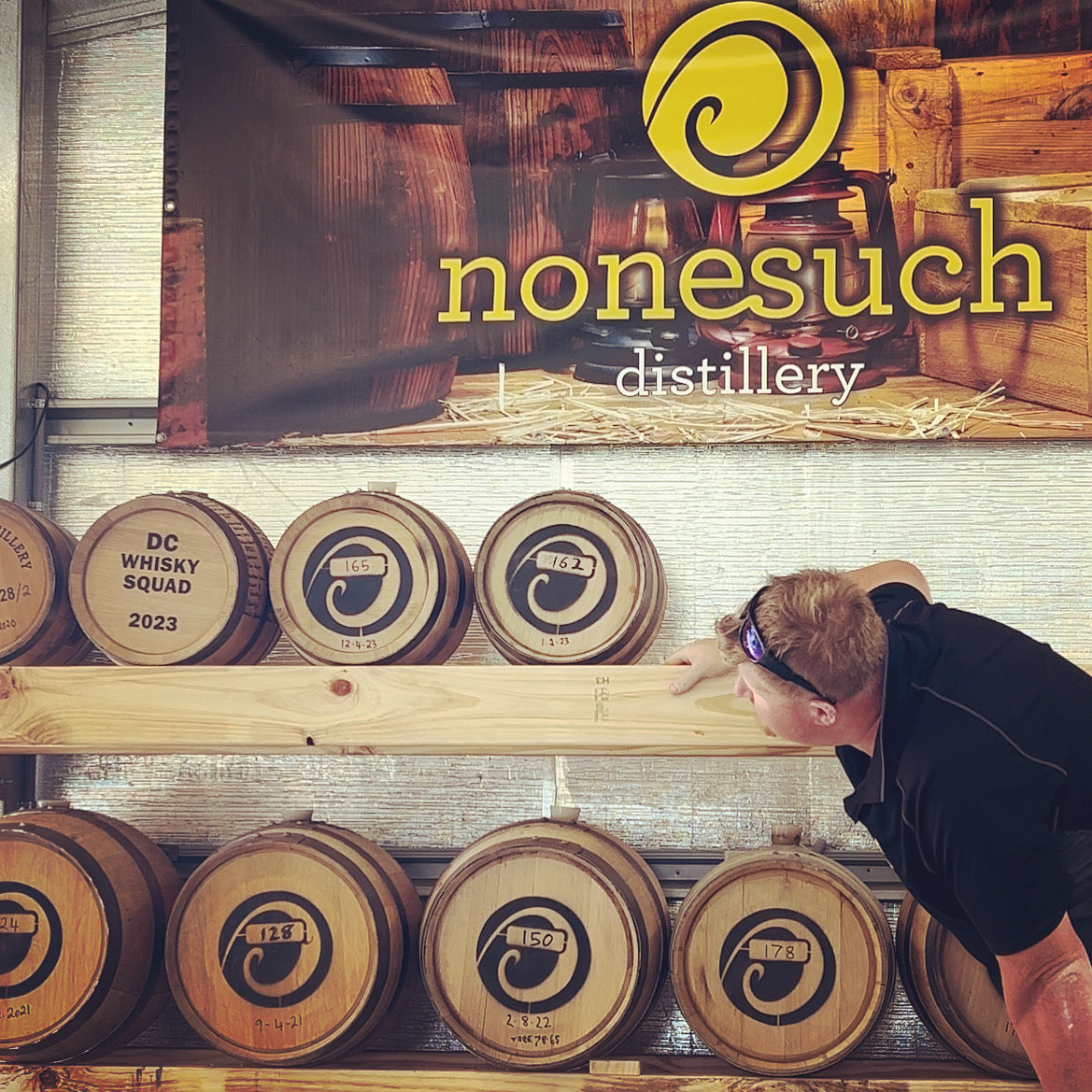The Age-Old Question: Why Size (of the Barrel) Matters in Whisky Maturation
At Nonesuch Distillery, we often get asked, “Why don’t you have any 18-year-old whiskies?” It’s a fair question. After all, those big age statements on a bottle can be quite tempting, like a badge of honour saying, “I’ve been around long enough to know my stuff.” But when it comes to whisky, age is just a number—especially when you’re talking about small barrels and the Tasmanian climate.
So, let’s pour a dram, sit back, and chat about why smaller barrels and our unique environment mean that big age statements might not be in the cards for us (and why that’s actually a good thing!).
Small Barrels, Big Flavours
First things first: the size of the barrel matters—a lot. At Nonesuch, we love using smaller barrels, typically around 20 to 50 litres, compared to the more traditional larger barrels that hold upwards of 200 litres or more.
Why do we go small? Because small barrels mean more wood-to-whisky interaction, which speeds up the maturation process.
In a smaller barrel, the whisky has more contact with the oak, which means it extracts those lovely flavours—vanilla, caramel, spice—much faster than it would in a big barrel. It’s like a crash course in flavour school, where our whisky is the star student, learning all the complexities of oak influence in a fraction of the time.
The Tasmanian Twist: Climate Counts
Now, let’s add a dash of Tassie’s wild weather into the mix. Our climate here in Tasmania is like the Goldilocks of whisky maturation—not too hot, not too cold, but just right. The temperature swings we experience throughout the year mean that the whisky in those small barrels is constantly expanding and contracting, breathing in the oak and developing character at a brisk pace.
While Scotland might take its sweet time with cool, steady maturation, our Tasmanian environment speeds things up, giving us rich, complex whisky in fewer years. So, while an 18-year-old Scotch might be a slow-burn romance, our whiskies are more of a whirlwind love affair—intense, memorable, and just as deep.
The Angel’s Share: When Less is More
Remember our old friends, THE ANGELS?
Well, they’re working overtime here in Tassie. Thanks to our climate, the Angel’s Share—the whisky that evaporates from the barrel—can be quite generous. This means that the longer we leave our whisky in the barrel, the more we lose to the heavens. And while we’re all for sharing a dram with the angels, there comes a point where too much evaporation means diminishing returns.
Over-Aging: The Devil’s in the Details
Here’s where things get tricky. Just because a whisky is older doesn’t mean it’s better. In fact, if we left our whisky in those small barrels for 18 years, it might not be a dram you’d want to sip. Why? Because whisky can be over-aged.
With all that intense oak interaction, especially in our smaller barrels, there comes a point where the wood starts to dominate, and the delicate balance of flavours is thrown off. Instead of a well-rounded whisky, you could end up with something that’s too tannic, too oaky, and frankly, a little too intense. It’s like adding too much spice to a dish—it overpowers the other ingredients.
Quality Over Quantity (of Years)
At Nonesuch Distillery, we’re all about creating the best whisky we can, and that means knowing when to say, “Enough is enough.” Our approach is to let each whisky age until it’s just right, balancing the influence of the oak, the angel’s share, and the unique Tasmanian climate. Whether that takes five years or eight years, what matters to us is that when you take that first sip, you’re tasting a whisky that’s full of character, complexity, and pure Tassie spirit.
So, while you might not see an 18-year-old Nonesuch whisky on the shelf anytime soon, what you will find is a dram that’s been carefully crafted, perfectly aged, and bursting with flavour. And in the end, that’s the kind of whisky we’re proud to share with you.
Cheers! 🥃


